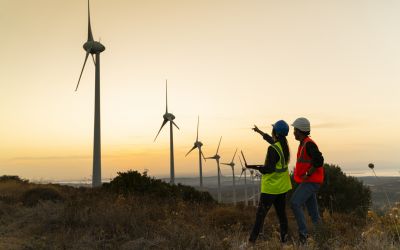WTW’s David Nelson on managing a portfolio’s climate transition risk with a forward-looking focus
Climate Transition Value at Risk (CTVaR), a measure that seeks to grasp how companies are susceptible to losses and gains in revenue and asset values as the global economy moves to a net-zero scenario, can help investors to manage transition risk in a completely different way.

Last year, WTW and Qontigo introduced the STOXX Willis Towers Watson Climate Transition indices (CTIs), which use Climate Transition Value at Risk (CTVaR) as a key measure. David Nelson, Senior Director at WTW’s Climate and Resilience Hub, provides insight about this approach.
David, the CTVaR measure is forward-looking and can, by definition, be very different from the more traditional carbon footprint criteria. Why and how did your team develop it to gauge climate transition risks?
“A few years ago, we started looking at how sustainability shocks transfer through the financial system as part of an analysis commissioned by a group of former finance ministers within the International Monetary Fund. In 2015, the Taskforce for Climate-Related Financial Disclosures had only just published its recommendations on reporting physical, transition and liability risks, and the potential for climate-related shocks to destabilize the global economy was front-of-mind for the Financial Stability Board following the Global Financial Crisis.
At that time, policymakers and regulators were focused on accounting for carbon and other greenhouse gas emissions generated in the real economy. Counting molecules of carbon is the essential first step to tackling climate change, but it’s only the start.
When we started looking at transition risk, i.e., the impact that changes in policy, regulation, markets and consumer behavior would have on asset values, we found that there were serious shortcomings in using a carbon price to measure risk. Part of the reason why carbon has a low correlation with transition risk is that emissions data are historical. That’s not much use if you’re trying to anticipate how assets should be repriced today based on future climate transition scenarios.
Furthermore, carbon footprints won’t tell you anything about the financial risks of the business model of a company. For example, a software company that supplies the oil and gas industry is more exposed to losing value under a climate transition than is a software supplier to cleantech industries. Equally, a mining company that provides lithium has a similarly high carbon footprint as does a coal miner, but it is making a greater contribution to the transition that carbon metrics would not capture. Assessing transition risk using carbon emissions could result in the misallocation of capital, starving the companies, industries, and innovations that drive the transition of investment.”
The focus of CTVaR is the risk to each company’s cash flows. How does that work and how is it reflected in the weights allocated to every stock in a portfolio?
“Our analysis begins with the basic principle that the value of an investment is the revenue that it will generate over its lifetime; that is, the net present value of future free cash flows. From that starting point we examine the changes to those cash flows relative to what the market is currently expecting and, therefore, is in today’s price for that security.
We apply scenarios to each asset or company business line, measuring the impact of these scenarios on the finances, and therefore valuations, of the company. We have adapted and developed scenarios for hundreds of sectors and commodities in the transition. Within individual companies, some business lines might have upside, while others might have downside, from which we derive the total valuation impact. We then feed those impacts into our company, equity and fixed-income valuation models.
The STOXX Willis Towers Watson Climate Transition indices (CTIs) are underpinned by the CTVaR methodology. They tilt away from companies with high exposure to climate transition risk and that are likely to lose value or underperform as the economy transitions. In practice, the index will hold less of a company with a negative CTVaR than the base index, and overweight where the CTVaR is positive. This is the result of the optimization process to have the portfolio reach a zero CTVaR.
Additionally, the index excludes companies that derive more than 25% of sales from thermal coal or oil sands extraction, or more than 50% of revenues from power generation.”






